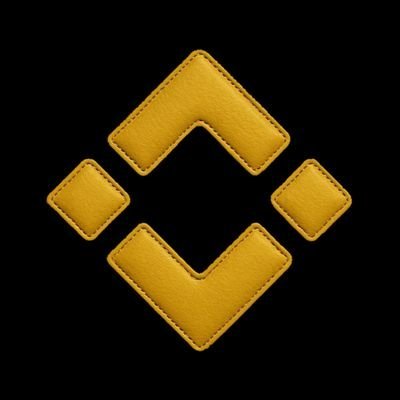Core price
in USD

About Core
Core’s price performance
Core in the news
The bank also reaffirmed TeraWulf (WULF) as its top pick in the sector.
The Kadena blockchain itself will continue to operate, the team noted, as it is maintained by independent miners and community developers.
Michael Intrator calls the deal a “nice to have” as ISS and major investors urge shareholders to reject the proposed acquisition.
Péter Szilágyi, a lead developer for Ethereum’s Geth client, has raised concerns about Vitalik Buterin’s...
The company calls its offer for CORZ “best and final” as it counters hedge fund criticism and urges investors to back the deal.
Supply has surged 72% year-over-year, led by Ethereum, Solana, and Plasma’s record debut, as stablecoins begin to mirror core banking functions
In an Oct. 14 memo, Matt Hougan says about $20 billion was liquidated, no major firms failed, core tech mostly held and clients stayed calm — signs the impact won’t last.
With rising liquidity, regulatory clarity and institutional use, stablecoins are moving beyond crypto trading to challenge traditional payment networks, DWS said.
The promise of a seamless digital economy is being sabotaged by a simple, recurring nightmare: network switching, says ZetaChain core contributor Jonathan Covey.
BitMine, a publicly traded firm focused on aggressive accumulation of Ethereum as a core treasury...
Core on socials
Guides

Core on OKX Learn
Core FAQ
Core is an L1 blockchain that combines the composability of an EVM chain and the decentralization and security of Bitcoin. It features a native token called CORE, which powers its network.
Core DAO intends to become the biggest community network of Web3. The bigger its community, the more dApps and other products and solutions will have to offer. Meanwhile, the more it has to offer, the more people will join the community.
You can buy CORE tokens on a number of different spot trading markets. One example is the OKX crypto exchange, which offers CORE/USDT pairs. In addition, it has a COREUSDT pair for perpetual swaps and margin trading.
If you wish to purchase USDT with fiat currencies, OKX has an “Express Buy” option that comes in handy. The platform also lets you use the Convert feature to convert your excess holdings to CORE. Alternatively, if you want to convert CORE into fiat, you can use the OKX crypto calculator to check the conversion rates.
Dive deeper into Core
When most people think about cryptocurrency they first think of its monetary and technological capabilities. After all, Bitcoin was created to replace the traditional monetary system. However, crypto has now become an industry that revolves around the community and decentralization.
Of course, the monetary and technological aspects are still the core of the crypto industry, however, the idea of community and inclusivity has become a crucial component. This is best reflected in Core DAO (CORE).
What is Core DAO (CORE)?
Core DAO (CORE) is a project built as an L1 blockchain. It is Ethereum Virtual Machine (EVM) compatible, meaning that it can run ETH smart contracts and decentralized apps (dApps). The Core network is powered by a unique consensus mechanism called Satoshi Plus. The mechanism’s purpose is to secure the network by combining Bitcoin’s mining hash and Delegated Proof of Stake (DPoS).
The developers wish to create an infrastructure that would operate at the core of Web3. This is a young project that launched in January 2023. It is completely decentralized and run by its DAO, which is responsible for the development of Satoshi Plus.
The Core DAO project team
Based on the official Core Dao accounts, the project was created by a global team of contributors — all of which have decided to remain anonymous — who share a vision of creating for a better Web3, the team plan to do this by establishing protocol rules ensuring the ecosystem’s growth on top of the decentralized Satoshi Plus consensus.
How does Core DAO work?
Core DAO revolves around Satoshi Plus, which validates transactions and secures the network. It was created to combine the best aspects of Bitcoin and Ethereum to produce a blockchain that doesn't compromise on Security, Decentralization, and Composability. Core offers the composability of the EVM chain. This ensures that developers have conditions for managing smart contracts and dApps. Through the creation of dApps, they bring value to the ecosystem and in turn — receive rewards.
CORE: Core DAO’s native token
CORE is the native cryptocurrency of Core DAO, and it was launched in early February 2023. The project created a max supply of 2.1 billion CORE tokens. The project’s total supply is also 2.1 billion units. However, its circulating supply sits at 7.07 percent of the total supply. As of July 2023, only 148.38 million CORE tokens are available on the market.
CORE token use cases
CORE is the native cryptocurrency of Core DAO, meaning that it is used to power the network. It serves as a governance token and can be used for staking. It also powers the project’s smart contracts and decentralized applications. Of course, like any other cryptocurrency, it is also used for trading and investing.
Core DAO (CORE) token Distribution
The allocation of Core DAO tokens (CORE) was distributed as follows:
- 39.995 percent was allocated to node mining.
- 25.029 percent was distributed to Core users.
- 15 percent was designated for contributors.
- 10 percent was reserved for future use.
- 0.476 percent was utilized for relayer rewards.
- 9.5 percent was earmarked for the treasury.
Core DAO: The core community project of Web3
Core DAO has created use cases for its project and token, but its main purpose is to connect the people. It does this by offering rewards for quality dApps, ensuring that developers would create them. With dApps to offer, the project can expect more users to join and connect with one another. This web of users is what it is after — a strong community with its own user base. As such, they would understand and power Web3 and help bring others to it.
Disclaimer
OKX does not provide investment or asset recommendations. You should carefully consider whether trading or holding digital assets is suitable for you in light of your financial condition. Please consult your legal/tax/investment professional for questions about your specific circumstances. For further details, please refer to our Terms of Use and Risk Warning. By using the third-party website ("TPW"), you accept that any use of the TPW will be subject to and governed by the terms of the TPW. Unless expressly stated in writing, OKX and its affiliates (“OKX”) are not in any way associated with the owner or operator of the TPW. You agree that OKX is not responsible or liable for any loss, damage and any other consequences arising from your use of the TPW. Please be aware that using a TPW may result in a loss or diminution of your assets. Product may not be available in all jurisdictions.








